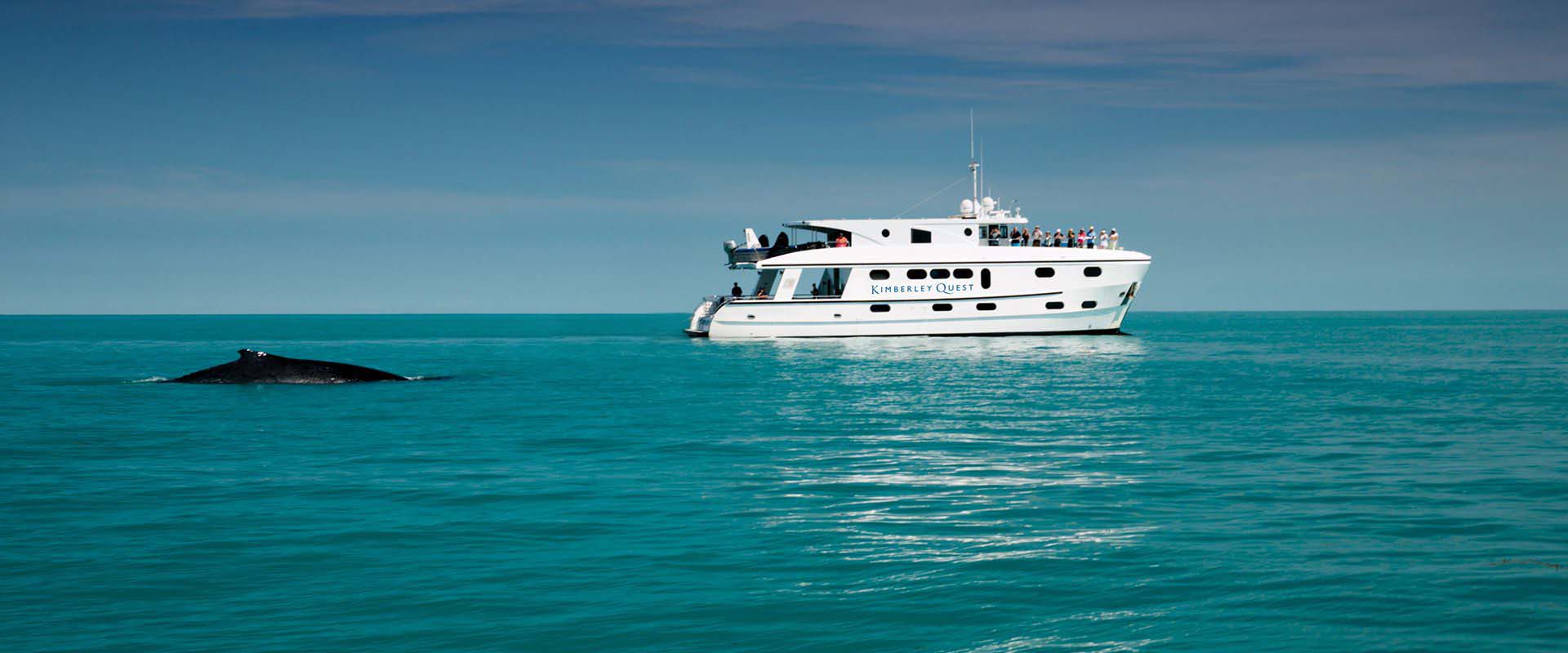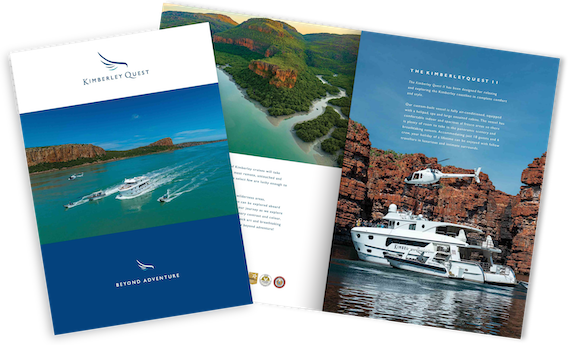Wonders of the ancient Kimberley region
FROM Rocky Cove on the shores of Vansittart Bay, where our boat lies at anchor after an overnight battering by storms, it’s a steep climb into the red hills above.
Narrow rock crevices must be negotiated, spinifex-spiked slopes traversed and temperatures nudging into the sweaty thirties endured.
But the hike – to a place so sacred, so precious, so fragile, that its precise location cannot be published – is rewarded by one of the Kimberley’s greatest treasures: a huge, open-air gallery of Aboriginal art, some of it dating back tens of thousands of years.
“No touching. No backpacks. They might scrape the rock. And watch out for the wasp nests,” says our guide and boat captain Ben Bonnett, as he points out sandstone paintings – not just of people, but catfish, echidnas, sea-turtles, snakes, jellyfish, and, more recent, of pearl “lugger ” boats.
They are examples of Bradshaw, or Gwion Gwion art, named respectively after the pastoralist who recorded them in the 1890s and a bird which, according to myth, pecked the rock with such force that its blood sprang forth. It then used its bloodied beak and feather to paint the dainty figures.
Within hours, we spot the real-life embodiment of the mythical bird: a sandstone shrike-thrush, 80m up, calling from a slab of the soaring, vivid pink, red and orange cliffs that, wedged between white clouds, blue skies and seas, define the wide-open Kimberley landscape.
Its story is just one of many tales – some true, some tall – to emerge from a vast, virtually empty land that covers 425,000 sq km of far northwest Australia. Nearby, for example, there are relics, too, of a home built in the 1930s by a local rogue called Willie Reid.
The half-caste son of a Queensland policeman, Reid was expelled from the local mission because of his rampant promiscuity. When asked once whether he ever read the bible, he recalled only the story of King Solomon, who allegedly had 700 wives and 300 concubines.
“I’m afraid Willie’s message had become one of free rather than Christian love,” one minister observed.
Within a few years, Reid was forced to move again, to Broome, after authorities destroyed the boat by which he scraped a living, fearful it might be seized by Japanese invaders.
A short hike away across mudflats, is another reminder of the wartime Japanese threat: the gutted wreckage of a DC3 air force plane forced to make a crash-landing after overshooting its Broome destination.
The five crew and two civilians on board defied ill-informed advice to “walk 20 miles to the east” and were instead rescued by a seaplane after spending four days living on distilled seawater, stale sandwiches, a bag of badly-crushed grapes and four fish shot by the captain.
Of course, there were no such discomforts nor food shortages, on our boat, the luxury, 25m Kimberley Quest II, during a memorable, eight-day trip exploring the coastline from the Mitchell Plateau to Wyndham (population 670), the most northerly town in the region.
Indeed, KQII boasts two contestants from the Master Chef Professionals television show who work alternate trips: the 2013 winner Rhys Badcock and finalist Nathan Brindle, who three times a day cooked up a culinary storm on our voyage and still found time to go fishing.
“Fish is my favourite. I always try to get to it before it has time to give off that fishy smell. Fresh fish don’t smell,” he explains as he heads off to fly-fish in the creek draining into Cape Talbot, where one evening the party of 14 gathers to light a fire and farewell another adventure-filled day.
The beach landing is one of many on a trip that begins on a typically high note, when we board a six-seater plane at Broome for the scenic flight to the Mitchell River, which roughly divides the southern and northern sections of the Kimberley coastline.
From there, it is an even shorter helicopter trip, offering spectacular, close-up views of the triple falls tumbling from the Mitchell Plateau before the chopper drops us off on the boat, right there on the roof.
In the afternoon, after a first taste of Brindle’s imaginative food, we enjoy our first view of Aboriginal art, take our first of many refreshing swims, in the guaranteed crocodile-free Surveyors Creek, and gently immerse ourselves in the seemingly empty, seductively timeless landscape.
The words of Roland Robinson’s poem Kimberley Drovers spring to mind. Fire-red mountains, fissured and caverned, lilac-hazed ranges, red-purple ravines have reared round, receded and reappeared all day through my vision.
This is the region of baobab trees, of monstrous obese baobabs squatting in chaos of sun-fired, sun-blackened boulders in the ranges’ ravines.
The next seven days are spent either cruising, often at night, or exploring, either by tender or on foot. So much is there to see that there is never a dull moment.
There are jellyfish, which become trapped in the boat’s water-intake ducts. There are sharks, mainly tawny reef sharks that come to the boat for fish scraps. There are saltwater crocodiles almost everywhere we look -except, hopefully, in the hollows many kilometres upstream where we swim.
The crocs lie in wait for unwary tourists in the mangroves, off the beaches, on the mudflats and in the wide rivers. Captain Bonnett says they have even been known to climb on board the sturdy tenders.”I was quietly fishing one day when I had a funny feeling something was wrong. I looked behind me and this croc was out of the water and on the back of the boat,” he tells city-dwellers half in love with outback danger.
There are birds, tens of thousands of them, depending on the season, ranging in size from brolga, jabiru and great-billed heron to tiny, rare visitors such as the yellow white-eye. And, of course, there are fish. For Brindle’s grill. For fun. For experts and newcomers alike.
Modesty does not prevent me from revealing that, thanks largely to Ben and crew members Brad and Matt, I catch a mangrove jack, an estuary cod and, that Kimberley must-catch, a barramundi. Happily, all three were deemed too small for the plate and were released.
Every day depending on weather and tide – features a walk, a swim, an adventure on dry, and, sometimes not-so-dry, land. The going is rarely easy. Both the Drysdale and Berkeley river explorations involve vertiginous, 45 degree climbs up shifting scree and large rocks.
With the guides’ help, everyone in the party, ranging in age from 40 to 80 forties to mid-eighties, reaches the top of the falls. As Bonnett says enthusiastically, exploring the Kimberley is a challenge as well as a cruise
.True. A boat is a great way to explore the Kimberley: it can reach places not accessible by road, it can get up close and sweaty to the ancient land, and at the end of the day, guests can enjoy a shower, a scrumptious meal and a comfortable bed.
Certainly, none of the wobbly-legged climbers, walkers and swimmers on board complains. And no one is deterred. Visitor numbers are soaring, and though their sea-paths rarely cross, the clean, green KQII is now one of a dozen cruise boats covering the same territory in different ways.
And that worries 68-year-old Don McLeod, who is possibly Australia’s most isolated inhabitant. Born in Sydney and raised in Lithgow, for the past 11 years he has lived on the upper reaches of the Drysdale River by agreement with the local, Aboriginal landowners.
He does one “big shop” each year, has a satellite connection with “civilisation” and spends most of the year alone, his only company a 300 kilogram pet groper. He rarely visits the “outside world”. The traffic noise, he says, sounds like “the roar of impending doom”.
But the roar is coming closer. Each year there are more cruise boats, more “privateers”, who leave beer cans,bottles, even toilet paper. “The way it’s going in a few years’ time it’ll be as busy here as Pitt Street.” Or Collins, Hindley, Eagle or Macquarie streets.
GO2 – THE KIMBERLEY
GETTING THERE All Kimberley Quest II cruises embark/disembark in either Broome or Wyndham.For cruises that embark/disembark in Wyndham, transfers are provided to/from Kununurra.
Skywest and Airnorth operate a daily service between Broome and Kununurra.There are direct flights to Broome during May through to September from Brisbane, Sydney and Melbourne.
STAYING THERE Kimberley Quest II offers a range of cruise/fly or cruise/cruise expeditions of eight or 14 days, as well as private charter and fishing trips. Prices for the eight-day “Northern Quest”, described above, start at $9180 a person for a twin cabin. The price does not include fares to and from Broome or Kununurra, but does include the light plane/helicopter transfers on cruise-fly trips.
This article was originally published by the Herald Sun.


